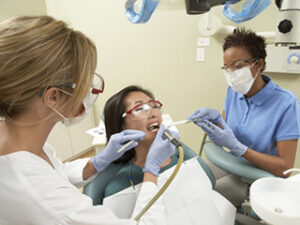Pneumococcal disease ranges in severity from ear and sinus infections to pneumonia, meningitis, and blood infections. The disease poses a serious threat to health worldwide, causing 735,000 deaths each year. According to the Center for Disease Control, a third of the 2 million children who die each year succumb to pneumococcal disease, which is most prevalent in countries where the vaccine is not readily available.
What Is pneumococcal disease?
The term pneumococcal is derived from the Greek words pneuma (wind, breath) and coccus (spherical shape, referring to the form of the bacterium). Pneumococcal disease is an infection caused by one of the 91 strains of Streptococcus pneumoniae bacteria. Symptoms of pneumococcal disease vary based on the specific illness the bacteria have caused. While children younger than 2 year are among those most at risk, pneumococcal disease is actually one of the leading causes of severe pneumonia in older adults. In very young children, it causes approximately 50% of all middle ear infections. The bacterium S. pneumoniae, or pneumococcus, can be invasive, meaning that it has the ability to spread into areas normally free of germs, such as the bloodstream or the fluids surrounding the brain and spinal cord. Bacterial meningitis and a blood infection known as bacteremia are both invasive forms of the disease, which can be fatal. The illness can be prevented through the pneumococcal vaccine or treated with antibiotics.
Where does pneumococcal disease come from?
Diseases caused by Streptococcus pneumoniae like pneumonia had been recorded for thousands of years by ancient physicians Hippocrates and Maimonides. While medical knowledge about these illnesses expanded over the Middle Ages, it was not until the 19th century that the bacterium causing them was discovered. Streptococcus pneumoniae was first isolated by Louis Pasteur in 1881 from the saliva of a patient with rabies. The bacterium was found to be a major cause of pneumonia in the following years. In 1884, Christian Gram identified S. pneumoniae is a pathogenic bacterium, a finding that allowed researchers to distinguish pneumococcal pneumonia from viral and fungal forms. The first pneumococcal vaccine appeared in 1977. Originally licensed to protect against 14 strains of the bacteria, the polysaccharide vaccine was expanded in 1983 to protect against 23 strains. A separate conjugate vaccine that protects children against the bacterial strains that cause the most virulent forms of middle ear infection became available in 2000.
How is pneumococcal disease transmitted?
Many people are colonized by Streptococcus pneumoniae bacteria without becoming ill. Streptococcus pneumoniae is present in the noses and throats of approximately 5% – 10% of healthy adults and 27% – 58% of school-aged children. The bacteria spreads the same way from a carrier or an ill person, through coughing or sneezing. Fortunately, it is not as contagious as the virus that causes influenza. The risk of transmission decreases when good hygiene habits such as hand washing are practiced, especially around those most at risk for pneumococcal disease – children under two, adults over 65, smokers, and anyone with a compromised immune system. Individuals with sickle cell disease, certain immune deficiencies, or chronic renal disease, and those taking immunosuppressive drugs or using cochlear implants, are also at an increased risk for pneumococcal infection. Furthermore, cigarette smoking also increases the risk of invasive pneumococcal disease.
What are pneumococcal disease symptoms?
Symptoms of pneumococcal disease vary based on the specific illness the bacterium caused. Pneumococcal disease usually causes symptoms like a fever and feelings of malaise. These general symptoms may be less pronounced in elderly individuals who might rather experience confusion or low alertness. Beyond that, symptoms vary depending on which part of the body is infected. The primary symptoms of pneumococcal pneumonia are coughing, chest pain, and shortness of breath. Bacterial meningitis presents with a stiff neck, nausea, and light sensitivity. The primary symptom of a middle ear infection is pain. The symptoms of blood infections are fever, chills and low alertness. Ear infections can cause ear pain, a red, swollen eardrum, as well as fever and sleepiness. In some cases, there can be permanent hearing loss or brain damage due to bacterial meningitis.
What is the pneumococcal vaccine?
There are two different pneumococcal vaccines. The first is the pneumococcal polysaccharide vaccine, known as PPSV23, which protects against 23 different strains of Streptococcus pneumoniae bacteria and is administered via intramuscular or subcutaneous injection. This vaccine does not generate immunity in children under two years of age. Made from dead bacteria that cannot harm people, the vaccine is given to adults over 65 to protect against bacterial pneumonia and to anyone over the age of two who is at high risk of infection. For children under two years old, there is a separate pneumococcal conjugate vaccine, made from smaller pieces of the whole bacteria and given as an intramuscular injection. Originally licensed in 2000 as PCV7, the vaccine was expanded in 2010 to protect against 13 strains of the most virulent infection-causing bacteria and renamed PCV13. Adults between the ages of 19-64 will need to get a booster shot of PPSV23 after five years if they have a condition that suppresses immunity, such as cancer or sickle cell disease, or are taking drugs that suppress immunity. Anyone over 65 will also need a five-year booster. It is important for at-risk individuals to get an annual influenza shot since the two vaccines work most effectively together to prevent pneumococcal disease. Both vaccines are inactivated vaccines ann cannot cause pneumococcal disease.
What are the pneumococcal vaccine side effects?
PPSV23, PCV13 and PVV7 are relatively safe vaccines with no or few side effects. The side effects may vary between the different vaccines in strength and frequency. Mild reactions to the vaccine include redness or tenderness at the site of the shot, a low-grade fever, as well as occasional drowsiness or loss of appetite. They can also cause a mild reaction at the site of the shot in approximately one half of the adults to whom it is administered. Some experience fever and chills after receiving a vaccine. In very rare cases serious allergic reactions to PPSV23 may occur, such as trouble breathing, hives, becoming pale or weak, having a very fast heartbeat, or feeling dizzy. Seizures have been reported in very rare cases after administering the PVV7 vaccine.
Who should not get the pneumococcal vaccine?
Anyone who has had an allergic reaction to either PPSV23 or PCV13 should not receive the vaccine. In addition, children who experienced a reaction to vaccines containing diphtheria toxoid should not be given PCV13. Children and adults who are seriously ill should postpone receiving either PPSV23 or PCV13. Although there is no known risk to either a pregnant woman or her fetus, doctors advise that women at greater risk for pneumococcal disease wait until they are no longer pregnant to receive PCV13. People who are moderately or severely ill should consult with their physician before receiving any vaccine.
Sources:
http://www.cdc.gov/pneumococcal/index.html http://www.historyofvaccines.org/content/articles/pneumococcal-disease-0 http://www.immunizationinfo.org/vaccines/pneumococcal-disease



